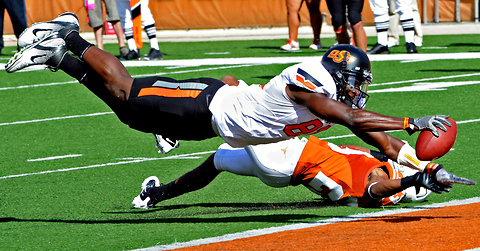you need to pore over my post once again, as I'm sure you did the first time. Not the last one, the one before that. Among other things, it will caution you in so many words to not take the word of officials trying to rationalize away a blown game-changing call in a hugely important game. If you look at the video in slow-motion as I did and as I'm very sure the review officials did, you can see that there were three steps taken, the last one being a lunge for the end zone. You're trying to tell me that had the receiver caught the ball and in two clean steps lunged the ball across the goal line, and landed in the end zone with the ball coming out on contact, that they would not signal a TD? Wrong. They would only not signal a TD if there was a question of the ball having not been caught; and a 'football move' makes it a catch. The lunge for the goal line is most definitely a football move. What you and others are apparently missing and what I was explaining is that there is not an interminable period of waiting for ground contact to see if the pass is complete. A pass can be complete and then there is ground contact and the ball can do whatever. There is sometimes ground contact when the pass is already deemed complete and it makes no difference if the ball comes out. That was the case with that play. The reversal was wrong.Originally posted by heelmanwilm:
@bluetoe
This from the nfl vp of officiating
Bryant going to the ground. By rule he must hold onto it throughout entire process of contacting the ground. He didn't so it is incomplete.
4:21pm - 11 Jan 15
Posted from Rivals Mobile
The problem was that, as someone else said, Bryant's athleticism in getting himself in position to catch the ball and then lunge for the goal line created an appearance of being out of control.



